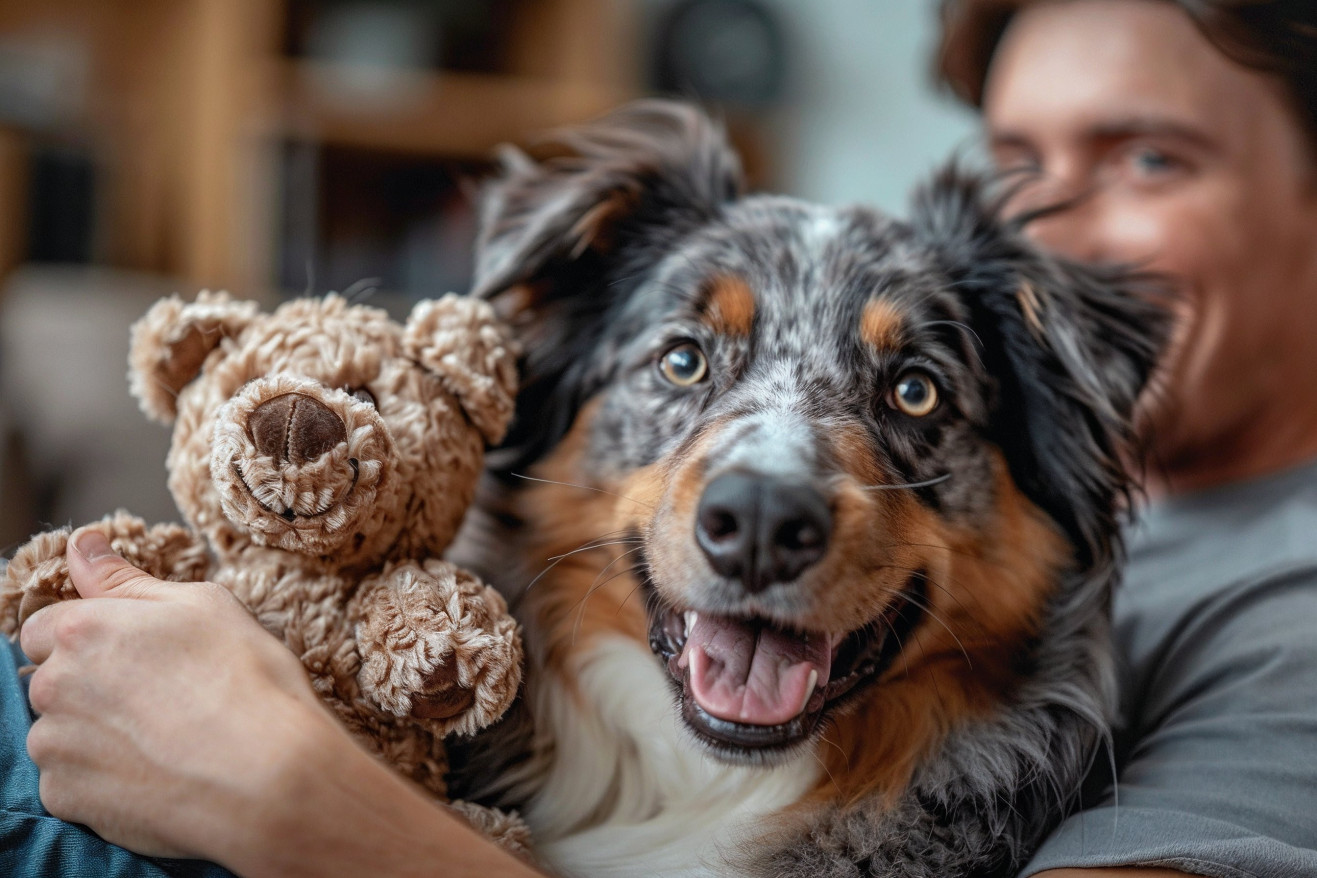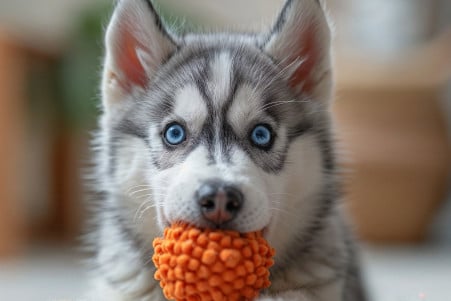Why Dogs Bring You Toys: Evolutionary Insights
7 June 2024 • Updated 5 June 2024

Have you ever wondered why dogs bring you their toys? What does it mean when they drop a ball or stuffed animal at your feet? This toy-bringing behavior is a remnant of dogs' wild past. When they "present" you with a toy, they're symbolically offering you a prey item and hoping for a positive response or a fun interaction in return.
Although this behavior is a product of evolution, this article will look at the science behind it to help you understand it better. Drawing on studies from animal behavior, evolutionary biology, and psychology, we'll uncover the biological and psychological factors that drive dogs to want to share their toys with us. Not only will this article help you learn more about your dog, but it will also show you how their evolutionary history influences their everyday interactions with humans.
Why do dogs bring you toys?
Evolutionary Origins and Breed Differences
The behavior of bringing toys to their owners is a result of dogs' evolution from pack animals and scavengers. According to Widget Bud, the act of "presenting" a toy is a way of showing the pack leader a kill to either share or get approval - a behavior that has been passed down from their ancestors.
While some breeds, such as retrievers, may have been bred to have a stronger instinct to carry and retrieve items, as noted in research from the Broad Institute, recent genetic studies have shown that behavior is not determined by breed alone. Instead, it is determined by a combination of many genes and environmental factors.
This means that the behaviors of different breeds of dogs likely evolved from the genetic diversity of ancient domesticated dogs over thousands of years rather than being directly bred into them. As Petmate explains, classic dog toys like bones, ropes, and balls were created to satisfy the chewing, carrying, and retrieving instincts that predate the creation of modern dog breeds. Understanding the evolutionary origins of toy-bringing can help us understand this instinctive behavior.
Why Dogs Bring Toys to Their Owners
Dogs may bring toys to their owners as a way to show excitement and a desire to play or interact, says ElleVet Sciences. The behavior can also be a sign of love, trust, and a way for dogs to share their favorite things with their 'pack', according to Dogster. In some cases, dogs may even be trying to distract their owners from their own excited behavior when they come home.
Moreover, the behavior of bringing a toy to an owner can be a learned response that dogs continue to exhibit because it has been positively reinforced by their owners, says Wag!. Recognizing the motivations and psychology behind this behavior - including excitement, love, trust, and learned responses - can help strengthen the bond and connection between people and their dogs.
How to Deal With Excessive or Inappropriate Toy-Bringing
While toy-bringing is a positive behavior, it can become excessive or involve inappropriate items. As Preventive Vet notes, dogs have a tendency to put everything in their mouths and often pick up things that could be dangerous to their health. The "drop it" command is important to prevent dogs from swallowing toxic or obstructive items.
Ignoring the behavior, redirecting to appropriate toys, and making sure your dog gets enough exercise can help you deal with excessive toy-bringing. Training commands like 'drop it' and 'leave it' can also help your dog learn impulse control, according to Preventive Vet. Meanwhile, if your dog guards toys, the American Kennel Club recommends using counterconditioning and desensitization.
If your dog is dealing with severe resource guarding or obsessive toy-bringing, working with a certified trainer or behaviorist can be helpful, according to The Wildest. By recognizing and addressing these behaviors, you can make sure your dog stays safe while still honoring their natural instinct to share their most prized items.
How to Promote Healthy Toy-Bringing
Positive reinforcement, such as cuddles, praise, and play, can help promote toy-bringing in a way that feels good for everyone, says Wag!. A variety of interactive and puzzle toys can also help meet dogs' instincts and mental stimulation needs, as noted in the Owner's Guide to The Psychology Of Dogs and Their Dog Toys.
Teaching dogs to retrieve and bring specific toys on command can also help direct this behavior in a positive way, according to Wag!. Meanwhile, making sure dogs have easy access to approved toys, especially when their owners come home, can help promote healthy toy-bringing. Finally, keeping dogs on a regular schedule and making sure they get enough exercise can help prevent dogs from bringing toys excessively due to pent-up energy, says Butternut Box.
By promoting healthy toy-bringing through positive reinforcement, appropriate toys, training, and overall care, dog owners can help strengthen their bond with their pets and ensure this natural behavior is expressed in a healthy way.
Individual Differences in Toy-Bringing Behaviors
Some studies have shown that there may be gender differences in toy-related behaviors like resource guarding. For example, Positively.com explains that intact male dogs are more territorial and more likely to guard toys than neutered males or females.
Age also seems to be a factor, with research from PMC finding that problem-solving skills and dependency decrease in older dogs. However, there have been few studies that have looked at cultural or regional differences in toy-bringing behaviors.
As is true of all behaviors, there are individual differences that are based on genetics, the environment, and life events. While a dog's breed may play a role in some of these differences, research from the Broad Institute has shown that behavior is influenced by many genes, not just a dog's breed. Understanding these individual differences can help researchers learn more about the many factors that drive a dog's toy-bringing behavior.
Conclusion: Understanding the Human-Dog Relationship
The behavior of bringing toys is rooted in dogs' evolutionary past and their pack instincts. By understanding the biological and social motivations behind this behavior, we can learn more about our relationships with our dogs. By understanding that dogs bring toys to people to connect with them and share joy, we can deepen our relationships with our pets.
Although some management may be necessary, the behavior should be seen as a sign of a dog's love and affection. Learning more about this behavior also shows how the wild behaviors of dogs have shaped the way they interact with humans.


